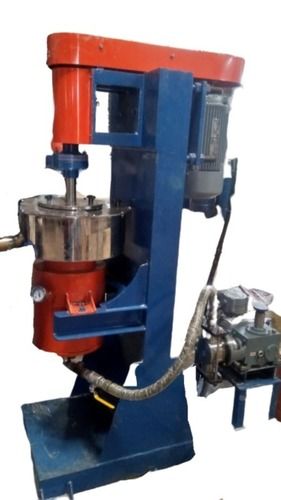
Nano Sand mill
Product Details:
Nano Sand mill Price And Quantity
- 175000 INR/Unit
- 1 Unit
Nano Sand mill Trade Information
- Cash Advance (CA) Cash in Advance (CID)
- 5 Unit Per Month
- 15 Days
- Asia Australia Central America North America South America Eastern Europe Western Europe Middle East Africa
- All India South India Central India West India North India East India Gujarat Karnataka Kerala Lakshadweep Mizoram Meghalaya Manipur Andhra Pradesh Bihar Chandigarh Daman and Diu Goa Jharkhand Odisha Punjab Assam Delhi Dadra and Nagar Haveli Andaman and Nicobar Islands Arunachal Pradesh Chhattisgarh Haryana Himachal Pradesh Jammu and Kashmir Madhya Pradesh Maharashtra Nagaland Rajasthan Sikkim Tamil Nadu Telangana Tripura Pondicherry Uttar Pradesh Uttarakhand West Bengal
Product Description
A Nano Sand Mill is a highly advanced grinding machine designed for ultra-fine and nano-scale dispersion of materials. It is widely used in industries such as coatings, inks, pigments, cosmetics, pharmaceuticals, and electronics where ultra-fine grinding and dispersion of particles are essential. The nano sand mill operates by using small, high-energy grinding beads to break down the materials to the nano-scale level, resulting in a uniform and fine dispersion.
The machine features a compact and efficient design, typically with a cooling system to manage the heat generated during the grinding process. It can handle high-viscosity products and achieve consistent particle size distribution, which is crucial for applications requiring high precision. The mill operates under a closed environment to prevent contamination, ensuring the purity and stability of the final product.
FAQs for Nano Sand Mill
1. What is the main purpose of a Nano Sand Mill?
The main purpose of a Nano Sand Mill is to grind and disperse materials to a nano-scale level, ensuring a uniform particle size distribution for high-precision applications in various industries.
2. What industries commonly use Nano Sand Mills?
Nano Sand Mills are commonly used in industries such as coatings, inks, pigments, cosmetics, pharmaceuticals, electronics, and nanotechnology.
3. How does a Nano Sand Mill achieve nano-scale dispersion?
The Nano Sand Mill achieves nano-scale dispersion by utilizing high-energy grinding beads that agitate the materials at high speeds, breaking them down to nano-sized particles.
4. What types of materials can be processed in a Nano Sand Mill?
A Nano Sand Mill can process a wide range of materials, including pigments, inks, coatings, resins, pharmaceuticals, and various nano-materials.
5. What are the benefits of using a Nano Sand Mill?
The benefits of using a Nano Sand Mill include ultra-fine and uniform particle size distribution, improved product quality, enhanced color strength and gloss in coatings and inks, and increased stability of emulsions and suspensions.
6. How does the cooling system in a Nano Sand Mill work?
The cooling system in a Nano Sand Mill typically uses water or other cooling fluids to manage the heat generated during the grinding process, ensuring that the temperature remains stable and preventing damage to sensitive materials.
7. Can Nano Sand Mills handle high-viscosity materials?
Yes, Nano Sand Mills are designed to handle high-viscosity materials efficiently, making them suitable for processing thick pastes and highly concentrated suspensions.
8. What is the difference between a Nano Sand Mill and a traditional sand mill?
The primary difference between a Nano Sand Mill and a traditional sand mill is the ability to achieve nano-scale particle sizes. Nano Sand Mills use smaller grinding beads and operate at higher speeds, allowing for finer dispersion and more uniform particle size distribution.
9. Is it possible to customize a Nano Sand Mill?
Yes, many manufacturers offer customization options for Nano Sand Mills to meet specific processing requirements, including the choice of materials for the grinding chamber, bead size, and cooling system.
10. How do you maintain a Nano Sand Mill?
Maintenance of a Nano Sand Mill involves regular cleaning of the grinding chamber, checking the condition of the grinding beads, ensuring the cooling system is functioning properly, and periodically inspecting the mechanical seals and other components for wear and tear




